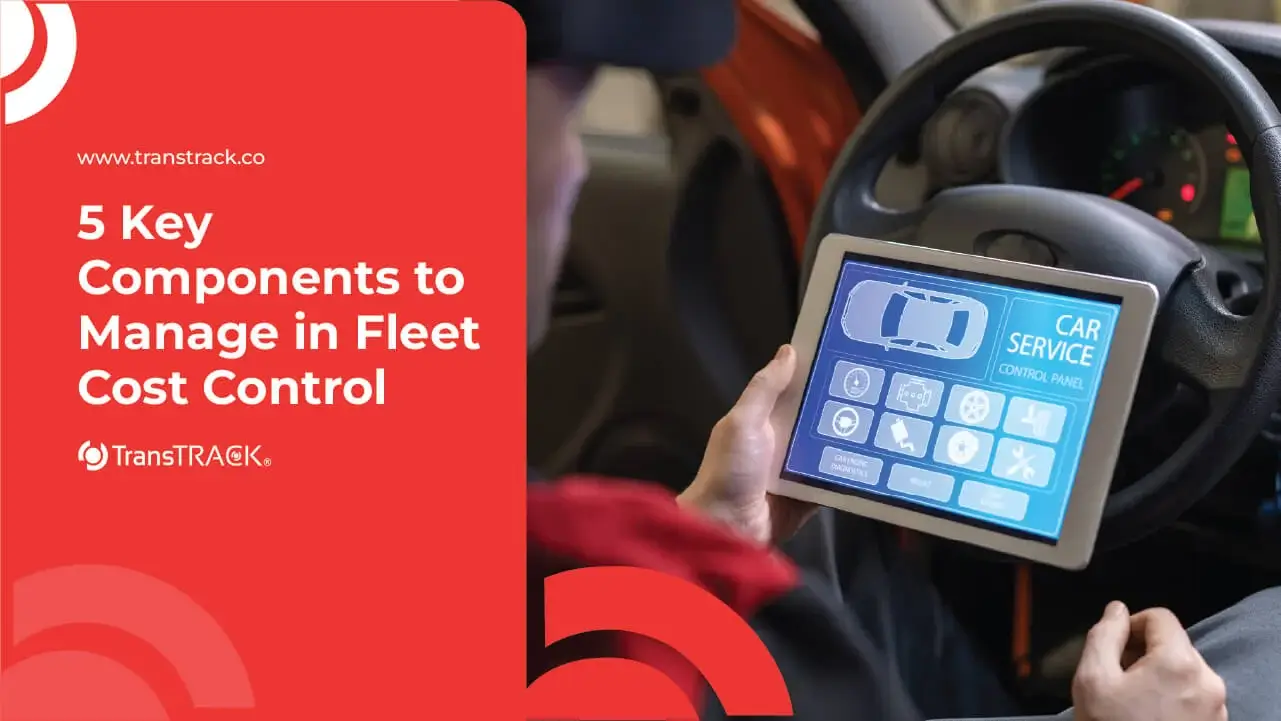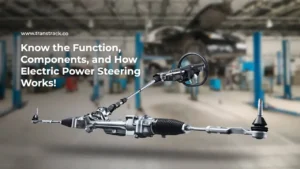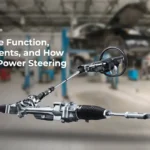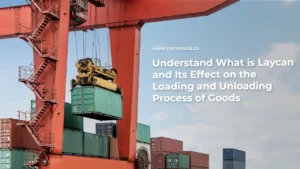5 Key Components to Manage in Fleet Cost Control
Posted on April 15, 2025 by Nur Wachda Mihmidati

In an industry that relies on fleet operations, cost management is a crucial factor in maintaining business sustainability and profitability. Without effective control, fleet operating costs can balloon significantly and erode profit margins.
Fleet cost control is a strategic solution to help companies manage fleet expenses more efficiently, measurably, and based on data.
Through the right approach and the use of modern technology, companies can reduce costs, increase productivity, and extend the life of their vehicles. In the following section, we will discuss the main components of fleet cost control, implementation strategies, and how technology can be the main key in optimizing it. Check out the following TransTRACK article for further explanation!
Fleet cost control, what does it mean?
Fleet cost control is the process of managing and optimizing all costs associated with operating a fleet of vehicles, whether trucks, cars, ships, or heavy equipment. The goal is to reduce expenses and improve operational efficiency without sacrificing performance or service.
Why is Fleet Cost Control Important for Business?
Fleet cost control is important for businesses because it has a direct impact on a company’s profitability, operational efficiency, and competitiveness. Here are the main reasons why:
- Reduce Operating Expenses
Fleet costs — such as fuel, maintenance, insurance, and vehicle replacement — can be one of the largest expenses in a business’s operations. With proper cost control, companies can save significantly. - Improve Fleet Efficiency
Effective cost management ensures vehicles are in optimal condition, use less fuel, and travel routes more efficiently, increasing fleet productivity. - Maximize Vehicle Life
With regular maintenance and proper vehicle replacement planning, fleets can be used longer and with lower maintenance costs. - Reduce Unexpected Financial Risks
Without fleet cost control, companies can be exposed to unexpected expenses such as major breakdowns or fines due to negligent maintenance and legal compliance. Good management reduces these risks. - Improve Safety and Compliance
Well-maintained vehicles and well-trained drivers not only reduce the cost of accidents, but they also help businesses comply with safety and transportation regulations. - Provide Data for Better Decision Making
Fleet cost control systems typically involve recording and analyzing data. This helps management make strategic, data-driven decisions, such as when to replace vehicles or invest in new technology. - Improve Corporate Image
A well-maintained fleet and efficient operations give a professional impression to clients and business partners, potentially increasing business opportunities.
Key Components in Fleet Cost Control
After understanding the importance of fleet cost control, the next step is to identify the main components that make up these operational costs. By knowing which areas contribute the most to expenses, companies can develop more effective strategies to optimize costs. Here are the main components in fleet cost control that need to be considered:
1. Fuel Costs
Fuel is one of the largest expenses in fleet operations. Fuel cost management includes:
- Choosing more fuel-efficient routes.
- Monitoring driving behavior such as idling, sudden acceleration, and excessive speeding.
- Utilizing telematics technology for fuel consumption analysis.
- Using more energy-efficient or alternatively fueled vehicles.
2. Maintenance and Repairs Costs
Routine maintenance helps prevent major damage and extends the life of the vehicle. This cost management includes:
- Periodic service schedules (preventive maintenance).
- Pre-trip inspections by drivers.
- Management of spare parts and workshops.
- Analysis of repair history to detect problematic vehicles.
3. Insurance and Administration Costs
Vehicle insurance and legal administration costs also contribute significantly to total fleet costs. Cost control strategies:
- Negotiating insurance premiums based on fleet performance.
- Implementing safety programs to reduce insurance claims.
- Vehicle document management such as STNK, KIR, transportation permits, etc.
- Automation of administration using fleet management software.
4. Driver and Training Costs (Driver-Related Costs)
The quality of the driver greatly affects the overall operational costs. Driver-related costs include:
- Salary, benefits, and incentives.
- Costs of recruiting and training new drivers.
- Costs due to bad driving behavior such as accidents or fines.
- Training programs to improve driving efficiency and safety.
5. Vehicle Depreciation
Depreciation is the decrease in the value of a vehicle over time. Depreciation management includes:
- Buying vehicles with high resale value.
- Maintaining the condition of the vehicle so that the selling price does not drop too much.
- Determining the optimal vehicle replacement cycle based on the total cost of ownership (TCO).
Strategies and Effective Ways to Control Fleet Costs
To achieve maximum efficiency in fleet management, a structured strategy supported by modern technology is required. By implementing the right approach, companies can significantly reduce operational costs without reducing service quality. Here are some effective strategies and methods that can be implemented:
1. Real-Time Fuel Consumption Monitoring
Controlling fuel usage is the first step in reducing fleet costs. With real-time monitoring, companies can detect waste, inefficient driving behavior, and even potential fuel misuse.
2. Routine Vehicle Inspection and Maintenance
Routine inspections help prevent major, costly breakdowns. Preventive maintenance schedules also keep vehicles in top condition, thus maintaining optimal fuel efficiency and safety.
3. Route and Travel Schedule Optimization
Efficient route planning reduces unnecessary mileage, travel time, fuel consumption, and vehicle wear and tear. Optimizing schedules also helps avoid congestion and excessive waiting times.
4. Driver Training for Fuel-Efficient Driving Behavior
Drivers who are trained in eco-driving techniques are able to reduce fuel consumption by 10–20%. This training includes smooth acceleration and braking techniques, maintaining a steady speed, and avoiding excessive idling.
5. Utilization of Telematics Data and IoT Fleet Management
Technology is the key to controlling fleet costs in a modern way. One of the best solutions is to use the Fleet Management System from TransTRACK which utilizes telematics and IoT data by providing:
- Real-Time Vehicle Monitoring: Track position, speed, and driving behavior directly from the dashboard.
- Fuel Monitoring System: Monitor vehicle fuel consumption and detect fuel anomalies.
- Maintenance Scheduling: Automatic system reminds vehicle maintenance schedules based on distance traveled or time.
- Driver Behavior Monitoring: Analyze driver driving style to improve safety and fuel efficiency.
- Route Optimization: Recommendations for the fastest and most efficient routes to reduce distance traveled and costs.
- Data Analytics and Reporting: Reports on operational costs, usage trends, and vehicle history are available for data-based decision making.
With the support of the TransTRACK Fleet Management System, companies are not only able to control costs, but also improve productivity, safety, and overall operational compliance.
Common Mistakes in Fleet Cost Control to Avoid
Although many companies have tried to manage fleet costs, many still make mistakes that actually cause wasteful costs without realizing it. To ensure that fleet cost control strategies are effective, it is important to avoid the following common mistakes:
1. Ignoring Vehicle Data and Telematics Reports
Vehicle data collected through telematics systems provides critical information such as fuel consumption, driving behavior, idling time, and engine condition. Ignoring this data means missing out on a huge opportunity to detect waste, improve fleet performance, and optimize operational costs.
2. Not Training Drivers on Driving Behavior
Drivers are a key factor in fleet operational efficiency. Without training on fuel-efficient and safe driving behavior, companies risk high fuel consumption, faster vehicle deterioration, and the potential for costly accidents.
3. Vehicle Maintenance Only Performed When Damaged (Not Preventative)
Waiting for a vehicle to break down before performing maintenance (reactive) is much more expensive than performing routine maintenance (preventive). Major damage often requires longer repair times and higher costs, and has an impact on disrupting fleet operations.
Fleet cost control is not just about saving money, but also building a more efficient, safe, and sustainable operational foundation. By understanding cost components, implementing the right strategies, and avoiding common mistakes, companies can increase profitability and competitiveness in the market.
However, manual fleet management efforts are often time-consuming, error-prone, and do not provide full visibility into operations.

This is where TransTRACK’s Fleet Management System becomes a strategic solution. With telematics technology, real-time data analytics, and comprehensive monitoring features, TransTRACK helps you optimize fleet usage, reduce costs, and increase efficiency measurably.
Improve your fleet cost control now. Trust fleet management to TransTRACK, and experience real efficiency in every trip!
Recent Post
Know the Function, Components, and How Electric Power Steering Works!
December 24, 2025Know the Types of Buses Based on Their Model, Size, and Capacity!
December 22, 2025Topic :
Recommended Articles

 Bahasa Indonesia
Bahasa Indonesia








